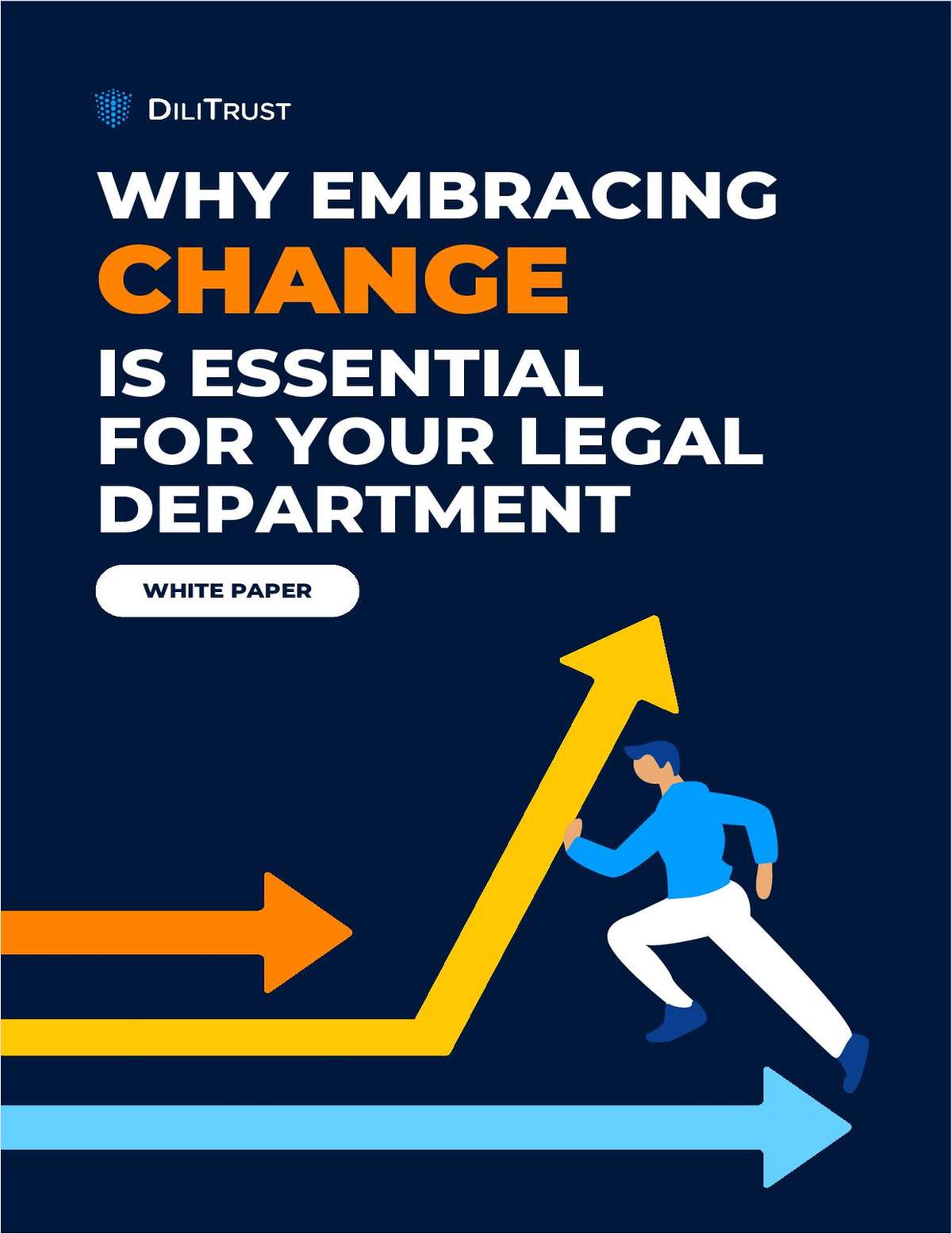LSAT-Takers Trending Up Following 5-Year Plunge. Why?
The trend upward is seen as welcome news for law schools—and the profession—since a bigger pool gives schools better odds for admitting more qualified applicants.
November 10, 2017 at 01:44 PM
6 minute read
A continuing surge in the number of people taking the Law School Admission Test this year provides another glimmer of hope to law schools that a drought in the applicant pool might be ending.
LSAT numbers have seen modest single-digit gains in the last two testing years, following a five-year decline in which the number of LSAT test-takers dropped by nearly 41 percent.
The trend upward is seen as welcome news for law schools—and the profession—since a bigger pool gives schools better odds for admitting more qualified applicants.
In September, 37,100 people took the LSAT, a 10.7 percent increase over September 2016. And in June, 27,600 people took the LSAT, a 19.8 jump compared with June 2016.
The number of people registering for the December LSAT is also up nearly 20 percent compared with last year, said Kellye Testy, president and CEO of the Law School Admission Council Inc., which develops the LSAT.
Law school enrollment has followed the same path as the LSAT numbers, with steady declines for years that have recently stabilized and seen a minor uptick, noted Paul Caron, dean of Pepperdine University School of Law in California and author of the TaxProf Blog. And with the increase comes more selectivity from law schools.
“If the total numbers go up, there will be more of those higher-performing students in the applicant pool, so that's what law schools are hoping to reach,” Caron said. “I would suspect a smaller increase in enrollments than there are in test-takers. Law schools will return to being more selective.”
June was the first administration of the test since the admission council lifted a cap on the number of times someone can take the LSAT. Previously, test-takers couldn't sit for the test more than three times during a two-year period. Now it's unlimited.
Both Caron and Lars Smith, interim dean of the University of Louisville Louis D. Brandeis School of Law, said that they and other law deans have wondered if this year's increasing LSAT numbers reflect more people re-taking the LSAT, rather than first-time test-takers.
“I'd love for the answer to be that there are more people interested in law schools,” Smith said. “The deans at all the law schools are hopeful the bottom has been reached and the applicant pool is increasing.”
Testy said that the increases are roughly equal between new test-takers and repeaters.
LSAT data shows there's a very slight upward trend in the number of repeaters since the rule change went into effect. During this June's test, 25.5 percent of the test-takers were repeaters, compared to the June 2016 test's 24.2 percent of repeaters. That's only a 1.3-point year-over-year increase in the number of June repeaters.
But the shift seemed to grow for the September test, when 31.4 percent of test-takers were repeaters, compared with 27.6 percent of repeaters on the September 2016 LSAT. That's a 3.8-point year-over-year increase in the number of September repeaters, and a 5.9-point increase in repeaters when comparing June to September.
Josiah Evans, assistant director of social science research at the admission council, wrote in an email he doesn't yet have enough data to spot a trend rather than normal variations in repeater numbers. He said it's normal to see more repeaters later in the testing year.
“This is something we will be looking into, but it is important to note that the numbers of repeaters alone will not tell the entire story. The rule change you refer to might also have the effect of persuading some first-time test-takers to take the test earlier than they would have planned,” he said.
Even if the upward trend in the total number of people taking the LSAT continues through the last two LSATs this testing year in December and February, it's not likely to make up for the drastic drop during the five-year slump.
Looking back 10 years, 142,300 took the test in 2007 and the number rose by 20.5 percent to a peak of 171,500 in 2009. But then it declined each year for five years, dropping by 40.7 percent total and hitting a low of 101,700 in 2014. The number increased by 4 percent in 2015 and again by 3 percent last year, to land at 109,400. That's 23 percent fewer test-takers than 10 years ago, and a whopping 36 percent less than the peak in 2009.
It also remains to be seen if LSAT numbers will ever climb to past levels again, given that more law schools are accepting the Graduate Record Examinations as an alternative to the LSAT. So far, nine schools—including Harvard Law School, Columbia Law School, Northwestern University Pritzker School of Law and Georgetown University Law Center—have decided to accept the GRE. Northwestern announced last month that it would accelerate its acceptance of the GRE for admission in fall 2018.
Testy said the admissions council often tries to assess trends in the numbers, but it's sort of like reading a crystal ball.
“I think there's a bit of renewed spirit in the United States of young people wanting to work for justice, and law school providing that pathway,” she said.
Some people have called it a Trump bump—young people inspired by lawyers who stood up for democracy, justice and the “little guy” after President Donald Trump early this year issued a travel ban that restricted travel from majority-Muslim countries, Testy said.
“This current environment in the United States in government I think has put law in the forefront in a way it hasn't been for a while in the media,” she said.
There's support for Testy's theory.
In a survey in August by Blueprint LSAT Preparation, more than 24 percent of 550 prospective law students cited Trump and politics as their most important reason for wanting to become a lawyer.
Caron has one more guess for the increases in LSAT test-takers.
“Those five years of declines—I think that was exacerbated by the very negative press that law schools were getting from The New York Times on down. They were doing negative story after negative story on law schools,” Caron said. “Those stories have petered out now.”
Angela Morris is a freelance reporter. Follow her on Twitter: @AMorrisReports
This content has been archived. It is available through our partners, LexisNexis® and Bloomberg Law.
To view this content, please continue to their sites.
Not a Lexis Subscriber?
Subscribe Now
Not a Bloomberg Law Subscriber?
Subscribe Now
NOT FOR REPRINT
© 2024 ALM Global, LLC, All Rights Reserved. Request academic re-use from www.copyright.com. All other uses, submit a request to [email protected]. For more information visit Asset & Logo Licensing.
You Might Like
View All
UChicago Law Professors Release Desk Reference Breaking Down Crypto, Web 3 for Attorneys
4 minute read


Dean Developments: 2 Law Schools Appoint New Leadership, ABF Elects New Fellow
4 minute readTrending Stories
- 1Call for Nominations: Elite Trial Lawyers 2025
- 2Senate Judiciary Dems Release Report on Supreme Court Ethics
- 3Senate Confirms Last 2 of Biden's California Judicial Nominees
- 4Morrison & Foerster Doles Out Year-End and Special Bonuses, Raises Base Compensation for Associates
- 5Tom Girardi to Surrender to Federal Authorities on Jan. 7
Who Got The Work
Michael G. Bongiorno, Andrew Scott Dulberg and Elizabeth E. Driscoll from Wilmer Cutler Pickering Hale and Dorr have stepped in to represent Symbotic Inc., an A.I.-enabled technology platform that focuses on increasing supply chain efficiency, and other defendants in a pending shareholder derivative lawsuit. The case, filed Oct. 2 in Massachusetts District Court by the Brown Law Firm on behalf of Stephen Austen, accuses certain officers and directors of misleading investors in regard to Symbotic's potential for margin growth by failing to disclose that the company was not equipped to timely deploy its systems or manage expenses through project delays. The case, assigned to U.S. District Judge Nathaniel M. Gorton, is 1:24-cv-12522, Austen v. Cohen et al.
Who Got The Work
Edmund Polubinski and Marie Killmond of Davis Polk & Wardwell have entered appearances for data platform software development company MongoDB and other defendants in a pending shareholder derivative lawsuit. The action, filed Oct. 7 in New York Southern District Court by the Brown Law Firm, accuses the company's directors and/or officers of falsely expressing confidence in the company’s restructuring of its sales incentive plan and downplaying the severity of decreases in its upfront commitments. The case is 1:24-cv-07594, Roy v. Ittycheria et al.
Who Got The Work
Amy O. Bruchs and Kurt F. Ellison of Michael Best & Friedrich have entered appearances for Epic Systems Corp. in a pending employment discrimination lawsuit. The suit was filed Sept. 7 in Wisconsin Western District Court by Levine Eisberner LLC and Siri & Glimstad on behalf of a project manager who claims that he was wrongfully terminated after applying for a religious exemption to the defendant's COVID-19 vaccine mandate. The case, assigned to U.S. Magistrate Judge Anita Marie Boor, is 3:24-cv-00630, Secker, Nathan v. Epic Systems Corporation.
Who Got The Work
David X. Sullivan, Thomas J. Finn and Gregory A. Hall from McCarter & English have entered appearances for Sunrun Installation Services in a pending civil rights lawsuit. The complaint was filed Sept. 4 in Connecticut District Court by attorney Robert M. Berke on behalf of former employee George Edward Steins, who was arrested and charged with employing an unregistered home improvement salesperson. The complaint alleges that had Sunrun informed the Connecticut Department of Consumer Protection that the plaintiff's employment had ended in 2017 and that he no longer held Sunrun's home improvement contractor license, he would not have been hit with charges, which were dismissed in May 2024. The case, assigned to U.S. District Judge Jeffrey A. Meyer, is 3:24-cv-01423, Steins v. Sunrun, Inc. et al.
Who Got The Work
Greenberg Traurig shareholder Joshua L. Raskin has entered an appearance for boohoo.com UK Ltd. in a pending patent infringement lawsuit. The suit, filed Sept. 3 in Texas Eastern District Court by Rozier Hardt McDonough on behalf of Alto Dynamics, asserts five patents related to an online shopping platform. The case, assigned to U.S. District Judge Rodney Gilstrap, is 2:24-cv-00719, Alto Dynamics, LLC v. boohoo.com UK Limited.
Featured Firms
Law Offices of Gary Martin Hays & Associates, P.C.
(470) 294-1674
Law Offices of Mark E. Salomone
(857) 444-6468
Smith & Hassler
(713) 739-1250











